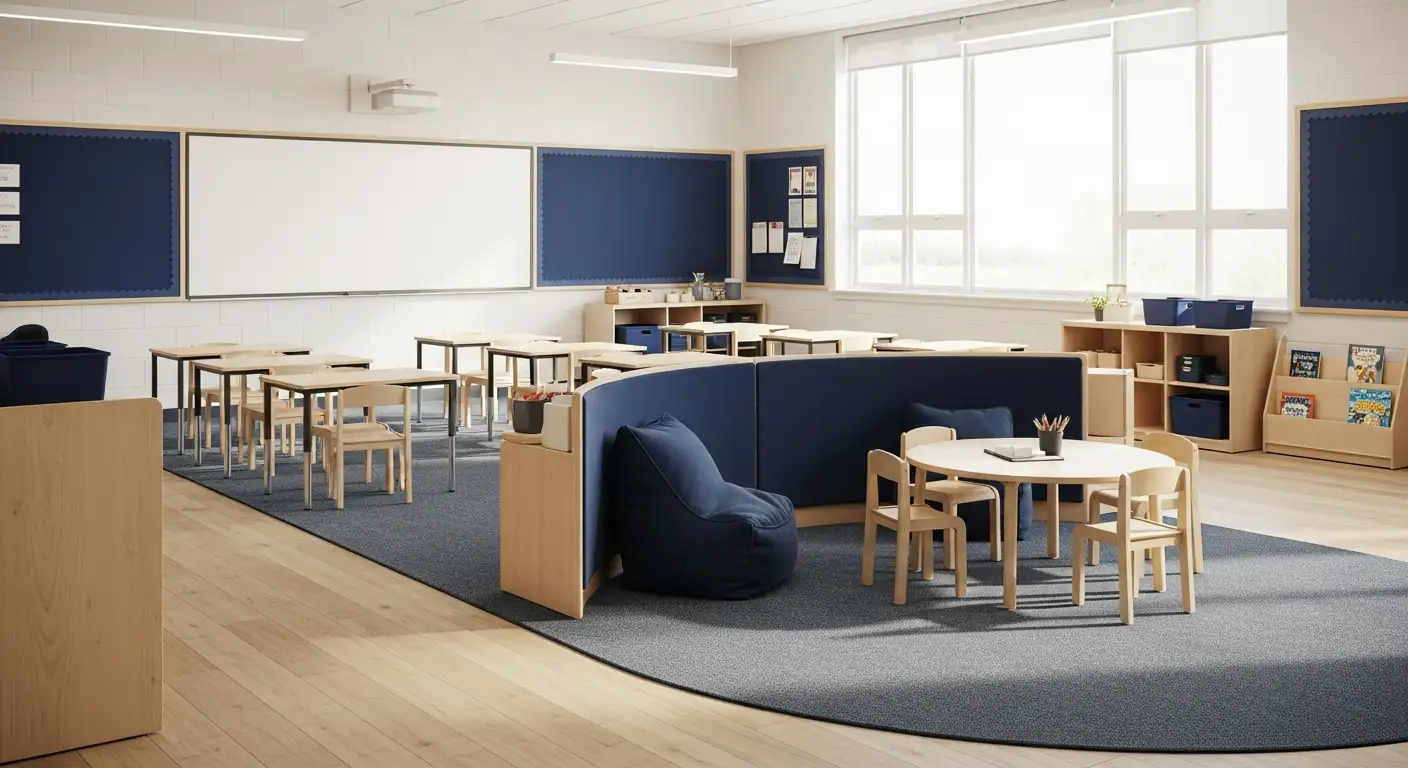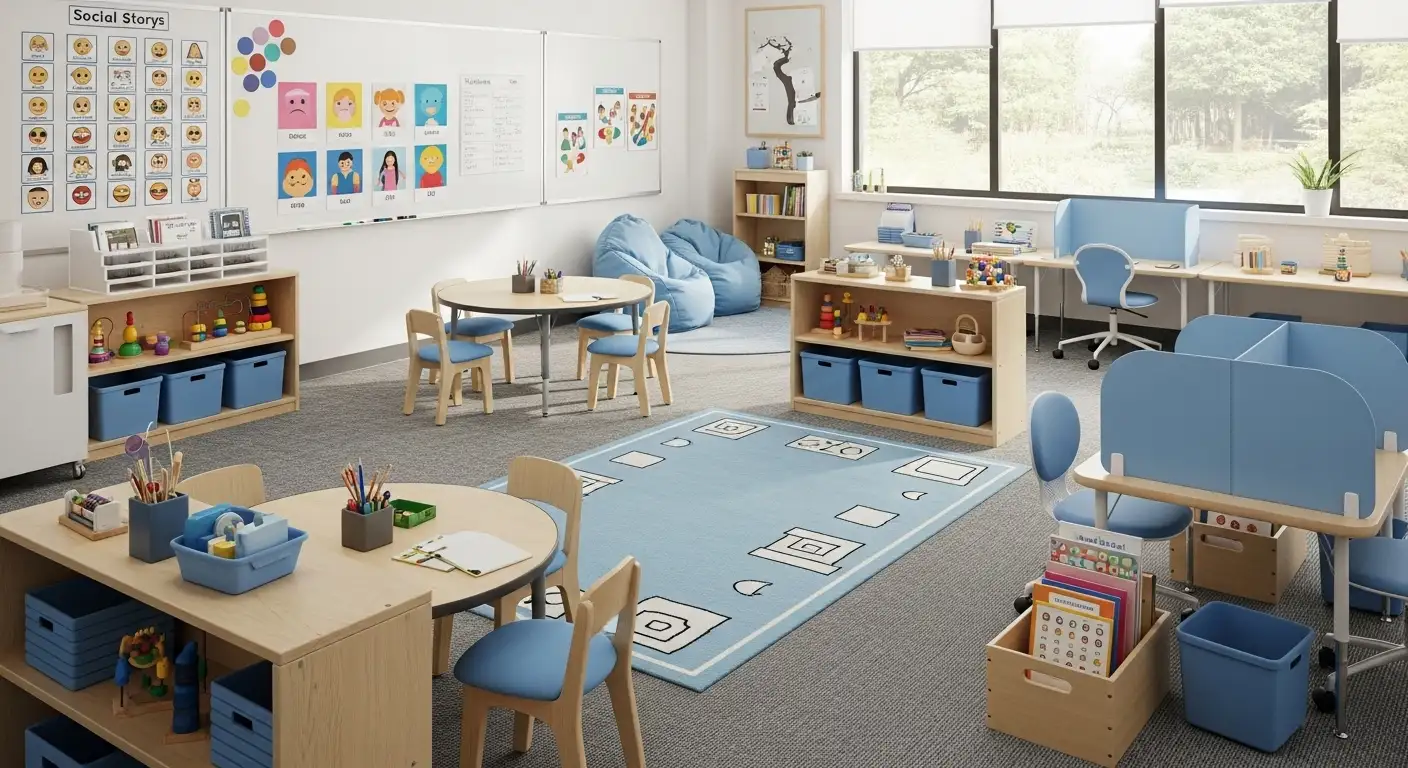Teaching Writing to Students with Autism
Unlocking the Potential of Autistic Writers: Strategies and Resources

A Comprehensive Guide to Teaching Writing to Students with Autism
Teaching writing to students with autism requires tailored strategies, specialized resources, and an understanding of their unique developmental challenges. By integrating evidence-based practices, visual supports, technology, and sensory tools, educators and caregivers can foster meaningful progress in writing skills. This article explores practical interventions, developmental considerations, effective instructional methods, and the available resources to empower educators and families in supporting autistic children’s writing journey.
Foundational Skills and Early Intervention
What resources are available for teaching writing to students with autism, such as curricula and tools?
Several research-based curricula and tools support teaching writing and academic skills to students with autism. The Indiana Resource Center for Autism offers a rich collection of curriculum materials targeting areas like communication, literacy, and life skills. These resources are available in their specialized library and are designed to be accessible and adaptable.
One notable program is "Essentials in Writing," created specifically for students on the autism spectrum. This curriculum incorporates visual aids, structured lesson plans, and flexible pacing to help students develop writing skills effectively. The focus is on building foundational skills through clear, scaffolded steps.
In addition to curricula, educational technology plays a vital role. Graphic organizers and visual templates help students organize their ideas and understand writing structures. Video lessons and alternative methods like speech-to-text software enable learners with different needs to participate actively.
Classroom strategies also emphasize customization and visual supports to motivate students and accommodate their unique learning styles. For instance, integrating visual cues, modeling, and self-managed activities enhances engagement and independence.
Overall, the emphasis is on structured, visual, and flexible approaches that align with the diverse requirements of children with autism to foster early writing development.
Understanding Developmental Challenges in Writing Instruction

What challenges do children with autism face when learning to write, and what developmental considerations should educators keep in mind?
Children with autism often encounter unique hurdles in learning to write. These challenges include difficulties with visual attention, which impacts their ability to focus on writing tasks and relevant visual cues. Fine motor coordination is also often affected, leading to struggles with handwriting skills such as letter formation, spacing, and overall legibility.
Another significant obstacle involves the cognitive skills necessary for organized writing. Children with autism may find it hard to plan, organize, and revise their written work, primarily due to deficits in central coherence and executive functioning. They might interpret tasks literally, have trouble understanding abstract concepts like time and sequence, and struggle with perspective-taking, which can impact creative and expressive writing.
Language and vocabulary limitations are common, making it difficult for children to generate ideas or express themselves clearly. Speech comprehension issues may further hinder their ability to understand oral directions or narrative structures.
For educators, understanding these developmental factors is vital. Instruction must be tailored to each child's current abilities, often involving explicit teaching methods and visual supports such as graphic organizers and visual checklists. Utilizing technology like speech-to-text software or writing templates can facilitate independent writing efforts. Incorporating pre-writing activities like tracing shapes, drawing, and sensory-based tasks help develop motor skills and sensory integration.
Creating structured routines and minimizing distractions can improve focus. Collaboration with occupational therapists for handwriting support and using children’s interests to motivate writing can make learning more engaging.
Overall, a combination of patience, visual cues, technology, and individualized strategies supports children with autism in overcoming writing challenges and developing essential communication skills essential for their academic and social success.
Research-Supported Strategies and Best Practices

Are there research-based guidelines and evidence-supported practices for supporting writing skills in students with autism?
Yes, there are established strategies grounded in research that have shown promise in helping students with autism develop their writing skills. These practices focus on creating supportive environments and using structured approaches tailored to their unique needs.
One of the foundational elements is the use of visual supports such as graphic organizers, visual checklists, and templates. These tools leverage the strong visual learning preferences of many children with autism, helping them organize ideas and understand writing tasks more clearly.
Explicit instruction and modeling are also crucial. Breaking down writing steps into manageable parts, demonstrating each step through videos or photos, and providing clear, scaffolded guidance can help students understand what is expected. Repetition and routine-based activities reinforce learning, while multisensory approaches—engaging tactile, proprioceptive, and oral supports—further strengthen skills.
Research highlights several effective intervention techniques, including self-regulated strategy development (SRSD). This approach involves teaching students specific rules and strategies, combined with visual supports and self-monitoring, to produce persuasive essays and stories.
Response prompting strategies, such as systematic prompting and time delay techniques, help children generate sentences, story ideas, and opinions. These methods establish functional links between interventions and student successes.
Technology plays an increasingly important role. Digital tools like speech-to-text software, graphic organizers integrated into learning apps, and visual checklists assist in reducing response effort, boosting motivation, and providing structured guidance. For instance, programs like First Author® incorporate visual prompts, word banks, and text-to-speech features, which enhance both the quantity and quality of student writing.
However, many educators report a lack of formal training on how to implement these supports effectively. Professional development focusing on strategies for teaching writing to students with autism is essential, enabling teachers to confidently apply evidence-based practices.
Overall, integrating visual methods, explicit instruction, technology, and targeted prompting creates a comprehensive framework that can significantly improve writing outcomes for students on the autism spectrum, fostering greater independence and self-expression.
Instructional Methods for Enhancing Handwriting and Written Expression

What instructional methods are effective for improving handwriting and written expression in children with autism?
Teaching handwriting and written expression to children with autism requires a variety of tailored strategies that address their unique learning styles and challenges.
One of the most effective approaches involves the use of visual supports. Graphic organizers, step-by-step charts, and templates help children understand writing processes and structure their ideas. These tools can guide students through organizing thoughts, creating outlines, and developing paragraphs, making the abstract process of writing more concrete.
In addition, multisensory and kinesthetic activities are valuable for strengthening fine motor and motor planning skills. Tactile activities like drawing shapes, tracing letters, and pressing shapes into clay engage multiple senses. Proprioceptive inputs, such as squeezing play dough or popping bubble wrap, help build hand strength and coordination.
Leveraging a child's interests can significantly boost motivation. Incorporating topics they are passionate about, such as favorite animals, hobbies, or special interests, makes writing tasks more engaging. Technology tools like speech-to-text software, digital graphic organizers, and writing apps further support learners by reducing physical and cognitive barriers. These tools can provide visual prompts, vocabulary support, and structured writing frameworks.
Explicit and systematic teaching methods are essential. This includes modeling desired behaviors, providing clear step-by-step instructions, and scaffolding tasks to gradually increase independence. Consistent practice within meaningful contexts helps students generalize skills, while positive reinforcement and a structured environment motivate continued effort.
Creating a sensory-friendly classroom environment with predictable routines, sensory accommodations, and reinforcement systems supports sustained engagement. When combined, these strategies make handwriting and written expression accessible and successful for children with autism, fostering communication, creativity, and learning.
Practical Tips, Interventions, and Resources for Support

What practical tips, interventions, and resources are available for educators, parents, and caregivers to support writing development in children with autism?
Supporting children with autism in developing their writing skills requires a combination of individualized activities, visual supports, and assistive technologies. Small, structured tasks like drawing shapes, tracing letters, and pressing shapes into clay help foster the sensory and motor skills fundamental for handwriting.
Incorporating visual cues, such as stickers, graphic organizers, and visual schedules, can significantly improve focus and understanding. These supports give children concrete visual anchors for planning their writing and understanding the sequence of activities. Using visual prompts to mark start and end points of lines or letters teaches purposeful movements, which are vital in developing handwriting skills.
Engaging children through their personal interests or special interests (SIAs) can boost motivation and enhance vocabulary, leading to better writing quality. Combining this with positive reinforcement, such as rewards or visual charts, encourages participation and perseverance.
Technology plays a vital role in supporting children with ASD. Speech-to-text software, digital word banks, and tools like First Author® facilitate writing by reducing physical and cognitive demands. These tools help children focus on content creation and organization, fostering independence and confidence. Visual supports like graphic organizers and templates additionally aid in idea generation and structural understanding.
Structured routines and sensory supports addressing proprioceptive, tactile, and oral needs contribute to a stable, low-stress learning environment. Consistent routines, along with social stories and explicit modeling, help children understand expectations while reducing anxiety.
Research-backed interventions such as response prompting strategies—like constant time delay or system of least prompts—and self-regulation techniques, including self-monitoring, support skill acquisition and retention. Regular, repetitive practice and exposure, combined with playful, multisensory activities, promote steady progress.
Finally, ongoing assessment and tailoring of strategies ensure that each child's unique capabilities and preferences are accounted for. This dynamic, supportive approach helps children develop not only their writing skills but also confidence and a sense of achievement, enabling them to participate fully in educational and community contexts.
The Power of Interests and Assessing Progress
How can understanding student interests and progress measurement enhance writing instruction for children with autism?
Recognizing what children with autism are passionate about or deeply interested in can transform writing lessons from a chore into an exciting activity. When educators incorporate students' specific interests or SIAs—special interests and passions—into writing tasks, children become more motivated to participate. For example, a student fascinated by animals might be encouraged to write stories, labels, or descriptions related to their favorite creatures. This approach not only boosts motivation but also enriches vocabulary and improves the overall quality of writing.
Tracking a child's progress through systematic observation and data collection is essential. Teachers can use checklists, writing samples, and ongoing assessments to monitor growth over time. This data helps identify what strategies are working and where adjustments are needed. It provides a clear picture of a child's developing skills in organization, idea generation,handwriting, and revision.
Patience, flexibility, and celebrating small successes play vital roles. Learning to write can be challenging for children with autism because of motor, cognitive, and communication difficulties. Recognizing small improvements—like holding a pencil correctly or completing a simple sentence—can boost confidence and motivate further effort. Creating a supportive environment where mistakes are seen as part of the learning journey encourages resilience.
By combining interest-based motivation with precise progress assessment, educators craft personalized, effective write-instruction that adapts to individual needs. This balanced approach guarantees that children with autism not only learn to write but enjoy the process and develop independence and perseverance.
Building a Supportive Environment and Implementing Routine

Organizing predictable routines to reduce stress
Establishing consistent routines helps children with autism feel more secure and reduces anxiety during writing activities. Clear, repetitive procedures make it easier for students to understand what is expected, fostering independence. For example, teachers might start each session with a visual schedule outlining steps like gathering materials, warm-up activities, and the actual writing task.
Creating sensory-friendly and inclusive classrooms
A sensory-friendly classroom accommodates sensory sensitivities common among children with autism. Using calming lighting, soft textures, and designated quiet zones can help students manage sensory overload. Incorporating visual supports, such as graphic organizers and visual cues, leverages their visual learning strengths and supports engagement.
The role of positive reinforcement and visual charts
Positive reinforcement motivates children to participate and persevere with handwriting activities. Visual charts displaying rewards, progress, or daily targets provide clear feedback and encourage continued effort. Reinforcing success with stickers or praise boosts confidence and builds a positive attitude toward writing.
| Strategy | Implementation Example | Benefits |
|---|---|---|
| Consistent routines | Follow a visual schedule for each session | Reduce anxiety, promote independence |
| Sensory supports | Use calming room features and tactile activities | Improve focus and comfort |
| Visual reinforcement | Reward charts with stickers for achievements | Increase motivation and persistence |
Fostering Growth and Encouraging Independence in Writing
Supporting children with autism in developing writing skills demands a comprehensive, individualized approach that integrates evidence-based strategies, visual supports, assistive technology, sensory tools, and a nurturing learning environment. Collaboration among teachers, parents, and specialists—along with ongoing assessment and adaptation—are essential for ensuring meaningful progress. By leveraging students’ strengths and interests, providing explicit instruction, and offering positive reinforcement, educators can unlock potential, foster independence, and improve the overall writing experience for students with autism, paving the way for their successful communication, learning, and participation in broader educational and social contexts.
References
- Autism and learning to write
- 'What? You Want Me to Write It Again?!': Try these tips for teaching ...
- [PDF] Teaching Written Expression to Students With Autism Spectrum ...
- Helping Your Child with Autism Handwriting: 8 Strategies That Work
- Using Technology to Support Students with Autism Spectrum ...
- How teachers provide writing instruction to autistic students: A pilot ...
- How to Teach an Autistic Child to Write (15 tips)




































































































